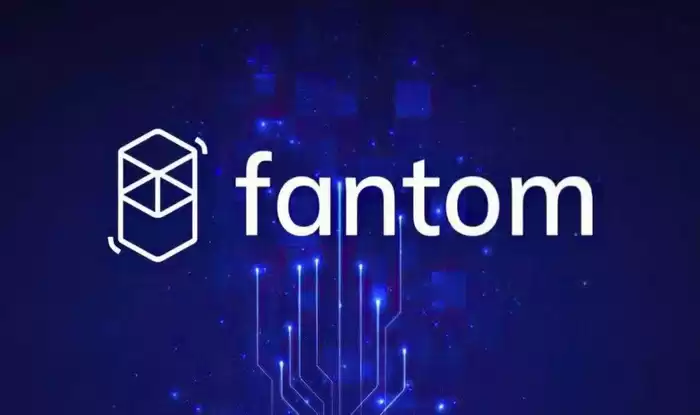-
 Bitcoin
Bitcoin $117800
-3.15% -
 Ethereum
Ethereum $4539
-3.66% -
 XRP
XRP $3.072
-6.08% -
 Tether USDt
Tether USDt $1.000
0.02% -
 BNB
BNB $834.3
-1.03% -
 Solana
Solana $193.1
-2.71% -
 USDC
USDC $0.9997
-0.01% -
 TRON
TRON $0.3583
-0.87% -
 Dogecoin
Dogecoin $0.2233
-8.06% -
 Cardano
Cardano $0.9033
3.60% -
 Chainlink
Chainlink $22.34
-5.78% -
 Hyperliquid
Hyperliquid $44.87
-4.90% -
 Stellar
Stellar $0.4226
-6.29% -
 Sui
Sui $3.765
-5.57% -
 Bitcoin Cash
Bitcoin Cash $588.5
-3.94% -
 Ethena USDe
Ethena USDe $1.001
0.00% -
 Hedera
Hedera $0.2489
-5.54% -
 Avalanche
Avalanche $23.69
-5.77% -
 Litecoin
Litecoin $120.8
-6.90% -
 Toncoin
Toncoin $3.398
-2.63% -
 UNUS SED LEO
UNUS SED LEO $9.276
0.31% -
 Shiba Inu
Shiba Inu $0.00001285
-7.22% -
 Uniswap
Uniswap $10.92
-9.38% -
 Polkadot
Polkadot $3.991
-5.68% -
 OKB
OKB $94.79
-8.25% -
 Dai
Dai $0.9998
0.01% -
 Bitget Token
Bitget Token $4.553
-4.67% -
 Cronos
Cronos $0.1514
-8.71% -
 Ethena
Ethena $0.7243
-7.57% -
 Aave
Aave $310.5
-5.14%
One article to fully understand what FTM coins are, the characteristics of FTM coins, and future development trends
Fantom (FTM) coins, the native currency of the Fantom network, offer low transaction fees, high transaction speed due to the Lachesis consensus mechanism, and staking rewards for passively earning income.
Oct 24, 2024 at 12:14 pm

Understanding Fantom (FTM) Coins: A Comprehensive Guide
1. Overview of Fantom (FTM) Coins
Fantom (FTM) is a fast, scalable, and secure blockchain platform designed for decentralized applications (dApps). FTM coins are the native cryptocurrency of the Fantom network, used for gas fees, transaction fees, and staking rewards.
2. Unique Features of FTM Coins
- Speed and Scalability: Fantom utilizes a unique consensus mechanism (Lachesis) that provides ultra-fast transaction times of less than 2 seconds and high throughput, surpassing many competing blockchain platforms.
- Low Transaction Fees: FTM coins have consistently low transaction fees compared to other cryptocurrencies, reducing the cost of operations on the network.
- Consensus Mechanism (Lachesis): Lachesis is an acyclic directed acyclic graph (DAG)-based consensus protocol that allows nodes to reach consensus without relying on resource-intensive proof-of-work or proof-of-stake mechanisms.
3. Utility of FTM Coins
- Gas Fees: FTM coins are used to pay transaction fees on the Fantom network, enabling users to execute smart contracts and interact with dApps.
- Staking Rewards: Holders of FTM coins can earn staking rewards by participating in the validation process on the blockchain, securing the network and earning passive income.
- Governance: FTM coins grant holders voting rights on the Fantom Improvement Proposals (FIPs), influencing the future development and direction of the platform.
4. Future Development Trends of FTM Coins
The future of Fantom (FTM) coins is promising due to the following factors:
- Strong Partnerships: Fantom has established partnerships with major players such as Google Cloud, Chainlink, and Band Protocol, enhancing its credibility and adoption potential.
- Expanding dApp Ecosystem: The Fantom dApp ecosystem continues to grow rapidly, attracting developers and users alike due to its speed, scalability, and low transaction costs.
- Ongoing Development: The Fantom team is actively working on new features and upgrades, including the development of a decentralized file storage system (Arweave integration) and cross-chain interoperability solutions.
5. Conclusion
FTM coins are the backbone of the Fantom blockchain platform, providing essential functionality such as gas fees, staking rewards, and governance. With its unique speed, scalability, and low transaction costs, FTM coins have gained substantial traction and are poised for further growth as the Fantom ecosystem continues to expand and innovate.
Disclaimer:info@kdj.com
The information provided is not trading advice. kdj.com does not assume any responsibility for any investments made based on the information provided in this article. Cryptocurrencies are highly volatile and it is highly recommended that you invest with caution after thorough research!
If you believe that the content used on this website infringes your copyright, please contact us immediately (info@kdj.com) and we will delete it promptly.
- Kazakhstan's Crypto Leap: Bitcoin ETF and Central Asia's Digital Finance Future
- 2025-08-13 12:45:19
- BlockDAG Presale Blazes Past $371M: Fundraising Frenzy Fuels Crypto Sensation
- 2025-08-13 13:05:21
- Meme Coins: Chasing the 2025 Surge – Which Will Moonshot?
- 2025-08-13 10:25:23
- Bitcoin's Wild Ride: Rally, Pullback, and What's Next
- 2025-08-13 10:25:23
- Bitcoin, Bitmax, and Institutional Demand: A New Era of Crypto Investment
- 2025-08-13 10:45:12
- Solana, ROAM, and Airdrops: What's the Buzz in 2025?
- 2025-08-13 11:35:13
Related knowledge

What is Ethereum’s Slashing mechanism and how to punish malicious behavior?
Feb 20,2025 at 03:08am
Key PointsOverview of slashingDifferent types of slashing in EthereumIncentives and consequences of slashingIdentifying and reporting slashed validato...

What is the verifier node of Ethereum and how to become a verifier?
Feb 19,2025 at 06:00pm
The Verifier Node of Ethereum: A Comprehensive GuideKey Points:What is a Verifier Node?How to Become a Verifier NodeResponsibilities and Rewards of a ...

What is Ethereum’s staking, and how to participate and earn money?
Feb 19,2025 at 04:37pm
Key Points:Understanding Ethereum's Staking MechanismSteps to Participate in StakingBenefits and Rewards of StakingSecurity and Risk ConsiderationsTec...

What is Ethereum’s DAO (Decentralized Autonomous Organization) and how does it work?
Feb 20,2025 at 03:12am
Key PointsDefinition and Structure of a DAOGovernance and Decision-Making in DAOsBenefits and Use Cases of DAOsChallenges and Limitations of DAOsWhat ...

What is Ethereum's multi-signature wallet and how to improve security?
Feb 20,2025 at 02:18pm
Key Points:Understanding the Concept of a Multi-Signature WalletBenefits and Drawbacks of Multisig WalletsRequirements for Setting Up a Multisig Walle...

What is Ethereum's oracle and how to provide data for smart contracts?
Feb 21,2025 at 01:30am
Key Points:Understanding the concept of oracles in EthereumExploring different types of oraclesDetailed guide on how to provide data for smart contrac...

What is Ethereum’s Slashing mechanism and how to punish malicious behavior?
Feb 20,2025 at 03:08am
Key PointsOverview of slashingDifferent types of slashing in EthereumIncentives and consequences of slashingIdentifying and reporting slashed validato...

What is the verifier node of Ethereum and how to become a verifier?
Feb 19,2025 at 06:00pm
The Verifier Node of Ethereum: A Comprehensive GuideKey Points:What is a Verifier Node?How to Become a Verifier NodeResponsibilities and Rewards of a ...

What is Ethereum’s staking, and how to participate and earn money?
Feb 19,2025 at 04:37pm
Key Points:Understanding Ethereum's Staking MechanismSteps to Participate in StakingBenefits and Rewards of StakingSecurity and Risk ConsiderationsTec...

What is Ethereum’s DAO (Decentralized Autonomous Organization) and how does it work?
Feb 20,2025 at 03:12am
Key PointsDefinition and Structure of a DAOGovernance and Decision-Making in DAOsBenefits and Use Cases of DAOsChallenges and Limitations of DAOsWhat ...

What is Ethereum's multi-signature wallet and how to improve security?
Feb 20,2025 at 02:18pm
Key Points:Understanding the Concept of a Multi-Signature WalletBenefits and Drawbacks of Multisig WalletsRequirements for Setting Up a Multisig Walle...

What is Ethereum's oracle and how to provide data for smart contracts?
Feb 21,2025 at 01:30am
Key Points:Understanding the concept of oracles in EthereumExploring different types of oraclesDetailed guide on how to provide data for smart contrac...
See all articles

























































































